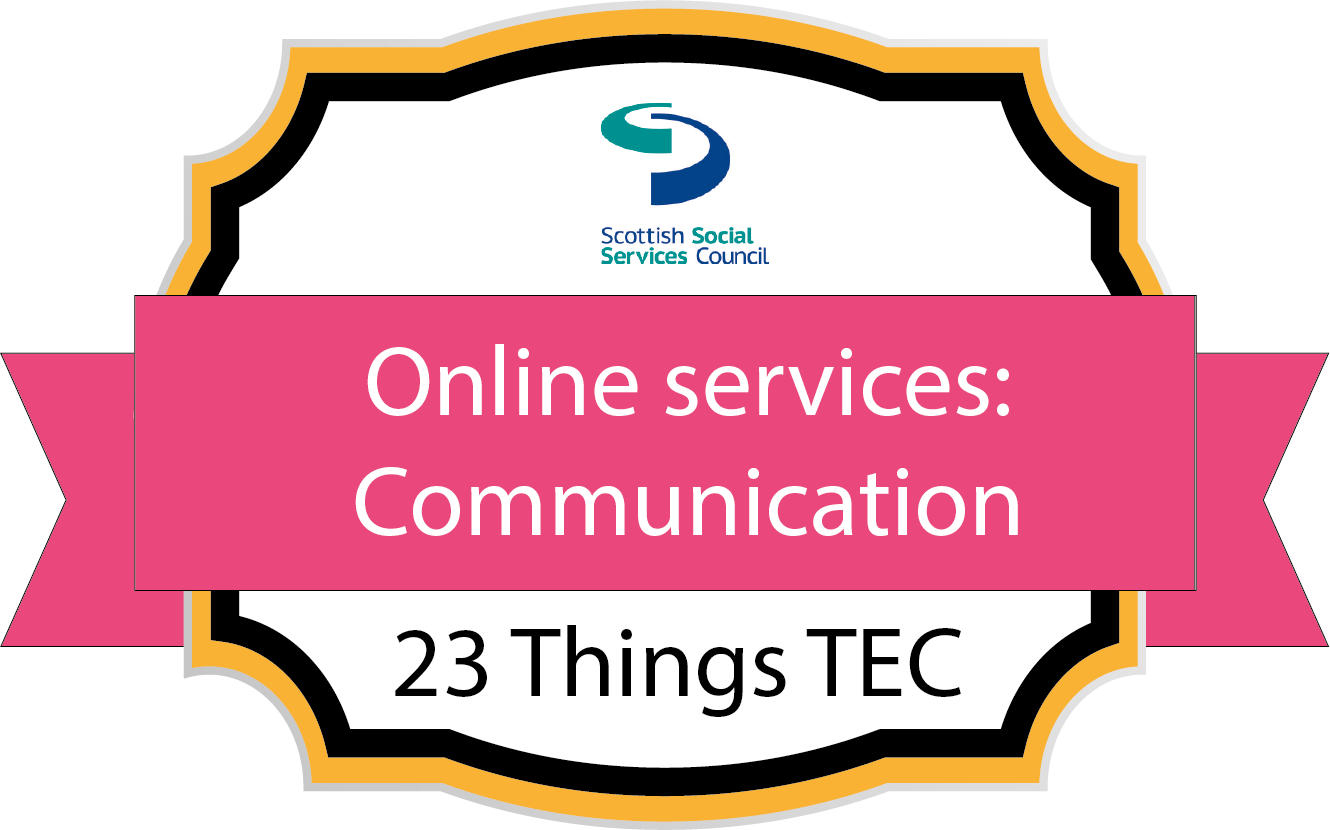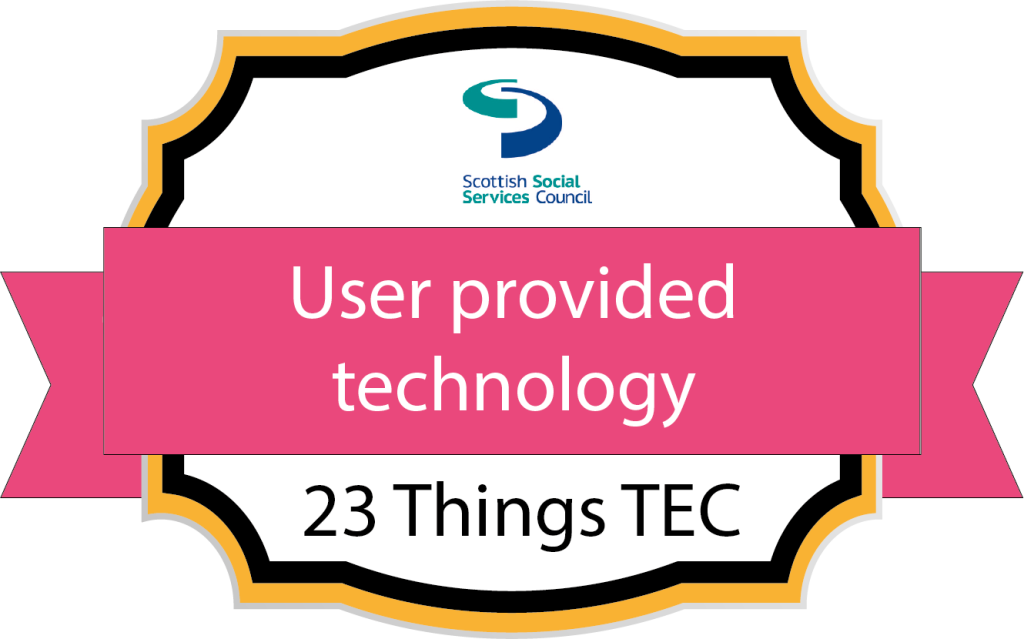Introduction
In this thing, you’ll develop your knowledge of how to support people to learn how to use a range of online video communication services.
MyLearning badge information
MyLearning Badge: SSSC 23 Things TEC – Thing 13: Online Services: Communication.

Counts towards the ‘User Provided Technology‘ milestone badge.

Video conferencing systems
One of the most significant and widespread technology developments since early 2020 has been the massive growth in the use of video communications services. This has included specialist systems like NearMe which allows people to use video conferencing to ‘attend’ Doctors’ appointments and outpatients appointments, but the most significant growth (in terms of numbers) has been in the use of video conferencing for business or social uses.
Maintaining services and businesses during the COVID 19 pandemic meant that most organisations very rapidly pivoted to using video conferencing as a means of communicating with both the public and their own staff.
But video conferencing has also provided an essential link to the outside world and to extended family during this same period. Social isolation can have a significant impact on individuals’ wellbeing at the best of times and, this is undoubtedly more acute when individuals’ social contact is restricted due to the pandemic.
This section provides a rough guide to the range of video conferencing systems and services most widely used and provides links to advice on how to set these up and use them.
FaceTime
FaceTime is the video conferencing tool for people who use Apple devices (iPhone, iPad, Mac computers). One of the benefits of this system for Apple users is that there is nothing to download (it’s built in to the device) and it’s usually setup as part of setting up your new device. There is a guide to using FaceTime on the Apple Website and the BBC have shared this video to help you make your first FaceTime call.
As you can see from the BBC video, using FaceTIme is pretty straightforward – just like making a regular phone call, you don’t have to schedule a time to ‘meet’ or share links and so on, just selecting the person’s phone number of email address will have their phone/iPad/Mac ringing.
The downside, is that it only works on Apple devices so, if the person you want to call doesn’t own an apple device, FaceTime is not going to work. In that case you might want to use one of the services below.
Zoom
One of the video conferencing services to really shoot up in popularity over the last year has been Zoom. It’s flexible and has both free-to-use and paid options, and it’s available on all devices with apps for all of the major hardware suppliers. Like most of the services in this section, to set up a meeting, you set up a date and a time in the Zoom app and send the link to the person, or people, you want to meet with. Next, you log in at the scheduled time to start your meeting.
It doesn’t matter if you are all using different devices, Zoom will work seamlessly on all of them for your meeting.
There’s a really helpful guide at Techradar website to get you started and a series of video guides on YouTube.
Microsoft Teams
The system which has been most widely adopted in public services is Microsoft Teams. It’s part of the Microsoft Office suite of software (Word, etc.) and once you set up your Microsoft account, you’re good to go.
For non-corporate users, there is a ‘home’ version which has a free-to-use option and in common with most of these services, there are guides available online to help you use the system.
Setting up a meeting in Teams is similar to using Zoom – you create a meeting date and time and share the link with the person or people you want to meet and then log in at the scheduled time to start your meeting.
Skype
Probably the longest running video conferencing service is Skype. It’s been around since 2003 and is now also owned by Microsoft, in fact MS Teams video conferencing is based on the pre-existing Skype for Business. There’s a full beginners guide available online, and this video shows you how to get going with Skype:
Like Teams and Zoom, Skype has a free-to-use option and there are apps for Apple iPhone, iPad and Mac computers as well as Android phones and tablets, and Windows PCs.
There are of course other services out there, like WhatsApp, Whereby, Google Meet (URL – https://meet.google.com ), FaceBook Rooms and so on. As with any such service, you should take care to read and use the privacy and security settings before you use them.
Learning Activity
a) Putting it into practice.
- As you can see, there are several ways you can support the learning of others. Looking at the options out lined here, which of these options could you use to support colleagues’ learning? How would you propose to set this up?
- Pick one of the services noted above (preferably one you have never used before) and install the software/app; set up an account and make a call using the service.
- How easy was it to install?
- Were the set up options (including the privacy/security settings) easy to understand?
- What was the call quality like?
- Did the service offer anything you thought was particularly useful/helpful?
b) Your experience.
Think about your own experience of using one of the communication services discussed above. What have been the most positive and least positive experiences so far and why? Most importantly, think about what you learned about using the system and how you learned it.
c) Notes.
Write a note of at least 200 words reflecting on the above activities –
- Record your answers to questions 2 (a)-(d) above.
- Do you know enough to now assist a person you support to set up and use one of these communication systems?
- If your answer to Q2 is “no”, what else would you need to know?
